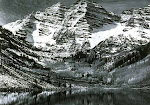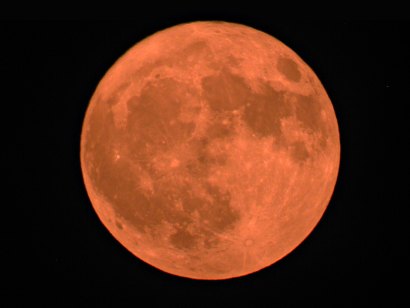Full Moon names date back to Native Americans of northern and eastern parts of America.
The tribes kept track of the seasons by giving distinctive names to each recurring full Moon. Their names were applied to the entire month in which occurred. There was some variation in the Moon names, but in general, the same ones were current throughout the Algonquin tribes from New England to Lake Superior. European settlers followed that custom and created some of their own names. Since the lunar month is only 29 days long on the average, the full Moon dates shift from year to year. Here is the Farmers Almanac's list of the full Moon names.
Full Wolf Moon - January Amid the cold and deep snows of midwinter, the wolf packs howled hungrily outside Indian villages.
Full Snow Moon - February Since the heaviest snow usually falls during this month. Also called Hunger Moon, since harsh weather conditions made hunting very difficult.
Full Worm Moon - March As the temperature begins to warm and the ground begins to thaw, earthworm casts appear, heralding the return of the robins.
Full Pink Moon - April This name came from the herb moss pink, or wild ground phlox, which is one of the earliest widespread flowers of the spring.
Full Flower Moon - May In most areas, flowers are abundant everywhere during this time.
Full Strawberry Moon - June This name was universal to every Algonquin tribe because the relatively short season for harvesting strawberries comes each year during the month of June. Full Buck Moon - July July is normally the month when the new antlers of buck deer push out of their foreheads in coatings of velvety fur.
Full Sturgeon Moon - August The fishing tribes are given credit for the naming of this Moon, since sturgeon, a large fish of the Great Lakes and other major bodies of water, were most readily caught during this month. A few tribes knew it as the Full Red Moon because, as the Moon rises, it appears reddish.
Full Corn Moon - September This name is attributed to Native Americans because it marked when corn was to be harvested. Most often, the September full moon is actually the Harvest Moon.
Full Harvest Moon - October This is the full Moon that occurs closest to the autumn equinox. In two years out of three, the Harvest Moon comes in September, but in some years it occurs in October. At the peak of harvest, farmers can work late into the night by the light of this Moon.
Usually the full Moon rises an average of 50 minutes later each night, but for the few nights around the Harvest Moon, the Moon seems to rise at nearly the same time each night: just 25 to 30 minutes later across the U.S., and only 10 to 20 minutes later for much of Canada and Europe.
Corn, pumpkins, squash, beans, and wild rice the chief Indian staples are now ready for gathering.
Full Beaver Moon - November This was the time to set beaver traps before the swamps froze, to ensure a supply of warm winter furs. Another interpretation suggests that the name Full Beaver Moon comes from the fact that the beavers are now actively preparing for winter. It is sometimes also referred to as the Frosty Moon.
Full Cold Moon - December During this month the winter cold fastens its grip, and nights are at their longest and darkest.
The midwinter full Moon has a high trajectory across the sky because it is opposite a low Sun.
Neil Young´s Harvest Moon:
Come a little bit closer
Hear what I have to say
Just like children sleeping
We could dream this night away.
But theres a full moon rising
Lets go dancing in the light
We know where the musics playing
Lets go out and feel the night.
Because I´m still in love with you
I want to see you dance again
Because I´m still in love with you
On this Harvest moon.
When we were strangers
I watched you from afar
When we were lovers
I loved you with all my heart.
But now its getting late
And the moon is climbing high
I want to celebrate
See it shining in your eyes.
Because I´m still in love with you
I want to see you dance again
Because I´m still in love with you
On this harvest moon.












